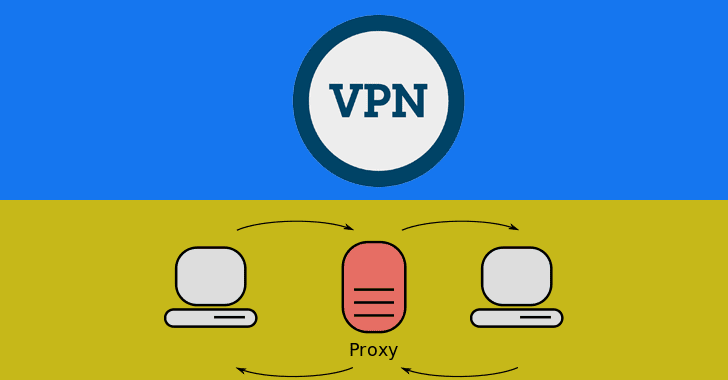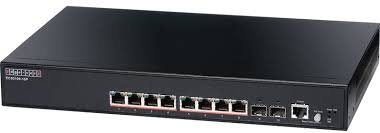Network infrastructure design is a critical aspect of modern IT environments, serving as the backbone for communication and data exchange within organizations. It encompasses the physical and virtual resources that facilitate connectivity, including routers, switches, firewalls, and cabling, as well as the protocols and services that govern data transmission. A well-structured network infrastructure not only enhances performance but also ensures reliability and scalability, allowing organizations to adapt to changing demands and technological advancements.
At its core, effective network infrastructure design requires a comprehensive understanding of an organization’s operational needs and future growth projections. This involves analyzing the types of applications in use, the volume of data traffic expected, and the geographical distribution of users. For instance, a company with a significant remote workforce may prioritize a design that supports robust VPN connections and secure access to cloud resources.
Conversely, a business with a centralized office may focus on optimizing local area network (LAN) performance to support high-speed data transfers and low-latency applications. By aligning the network design with organizational goals, businesses can create a resilient framework that supports both current operations and future innovations.
Key Takeaways
- Network infrastructure design is crucial for the overall performance and efficiency of an organization’s IT system.
- Assessing the current network infrastructure helps in identifying areas that need improvement and optimization.
- Identifying bottlenecks and inefficiencies is essential for enhancing the network’s performance and reducing downtime.
- Implementing scalable and flexible solutions ensures that the network can adapt to the changing needs of the organization.
- Utilizing virtualization and cloud technology can help in optimizing resource utilization and reducing infrastructure costs.
Assessing Current Network Infrastructure
Before embarking on any redesign or enhancement of network infrastructure, it is essential to conduct a thorough assessment of the existing setup. This evaluation should encompass both hardware and software components, as well as the overall architecture of the network. Key performance indicators (KPIs) such as bandwidth utilization, latency, and error rates should be measured to identify areas that require improvement.
Tools like network monitoring software can provide valuable insights into traffic patterns and device performance, enabling IT teams to pinpoint weaknesses in the current infrastructure. In addition to technical assessments, it is crucial to gather feedback from end-users regarding their experiences with the network. User satisfaction surveys can reveal pain points such as slow connection speeds or frequent outages, which may not be immediately apparent through technical metrics alone.
By combining quantitative data with qualitative insights, organizations can develop a holistic understanding of their network’s strengths and weaknesses. This comprehensive assessment serves as a foundation for informed decision-making when planning upgrades or redesigns.
Identifying Bottlenecks and Inefficiencies

Once the current network infrastructure has been assessed, the next step is to identify bottlenecks and inefficiencies that hinder performance. Bottlenecks can occur at various points within the network, including bandwidth limitations on specific links, overloaded switches or routers, or inadequate server resources. For example, if a particular router is consistently operating at maximum capacity during peak hours, it may lead to increased latency and dropped packets, negatively impacting user experience.
Inefficiencies may also arise from outdated hardware or software configurations that do not align with current usage patterns. For instance, legacy systems may struggle to handle modern applications that require higher bandwidth or lower latency. Additionally, misconfigured devices can lead to suboptimal routing paths or unnecessary traffic congestion.
By employing diagnostic tools such as packet analyzers or flow monitoring solutions, IT teams can gain visibility into traffic flows and identify specific areas where improvements are needed. Addressing these bottlenecks is essential for optimizing network performance and ensuring that resources are utilized effectively.
Implementing Scalable and Flexible Solutions
| Metrics | Value |
|---|---|
| Scalability | High |
| Flexibility | Adaptable |
| Implementation Time | Efficient |
| Cost | Optimized |
In today’s fast-paced business environment, scalability and flexibility are paramount when designing network infrastructure. Organizations must be able to adapt quickly to changing demands, whether due to growth in user numbers, increased data traffic, or the adoption of new technologies. Implementing scalable solutions involves selecting hardware and software that can accommodate future expansion without requiring a complete overhaul of the existing infrastructure.
One approach to achieving scalability is through modular design principles, which allow for incremental upgrades as needed. For example, organizations can invest in stackable switches that enable additional units to be added seamlessly as traffic demands increase. Similarly, adopting software-defined networking (SDN) can provide greater flexibility by allowing administrators to manage network resources dynamically through centralized control software.
This enables rapid adjustments to configurations in response to real-time conditions, ensuring that the network remains responsive to user needs.
Utilizing Virtualization and Cloud Technology
The integration of virtualization and cloud technology into network infrastructure design has revolutionized how organizations manage their resources. Virtualization allows multiple virtual machines (VMs) to run on a single physical server, optimizing resource utilization and reducing hardware costs. This technology enables organizations to deploy applications quickly and efficiently while maintaining high availability and disaster recovery capabilities.
Cloud technology further enhances this flexibility by providing on-demand access to computing resources over the internet. Organizations can leverage public, private, or hybrid cloud solutions to scale their infrastructure according to fluctuating workloads without the need for significant capital investment in physical hardware. For instance, during peak business periods, companies can temporarily increase their cloud resources to handle additional traffic and then scale back down when demand subsides.
This elasticity not only improves operational efficiency but also allows organizations to focus on their core competencies rather than managing complex hardware setups.
Embracing Automation and Orchestration

As networks grow in complexity, automation and orchestration have become essential tools for managing infrastructure efficiently. Automation involves using software tools to perform repetitive tasks without human intervention, such as configuring devices or applying security patches. This not only reduces the potential for human error but also frees up IT staff to focus on more strategic initiatives.
Orchestration takes automation a step further by coordinating multiple automated tasks across different systems and processes. For example, an orchestration platform can manage the deployment of new applications across various servers while simultaneously configuring network settings and security policies. This holistic approach ensures that all components of the network work together seamlessly, enhancing overall performance and reliability.
By embracing automation and orchestration, organizations can achieve greater agility in their operations while minimizing downtime and improving service delivery.
Ensuring Security and Compliance
In an era where cyber threats are increasingly sophisticated, ensuring security within network infrastructure is non-negotiable. Organizations must implement robust security measures at every layer of their network architecture to protect sensitive data from unauthorized access and breaches. This includes deploying firewalls, intrusion detection systems (IDS), and encryption protocols to safeguard data in transit.
Compliance with industry regulations is another critical aspect of network security. Organizations must adhere to standards such as GDPR, HIPAA, or PCI DSS depending on their sector and the nature of the data they handle. This often requires implementing specific security controls and maintaining detailed logs for auditing purposes.
Regular security assessments and penetration testing can help identify vulnerabilities within the network infrastructure before they can be exploited by malicious actors. By prioritizing security and compliance in their network design, organizations can mitigate risks while fostering trust among customers and stakeholders.
Monitoring and Continuous Improvement
The final component of effective network infrastructure management is ongoing monitoring and continuous improvement. Establishing a robust monitoring framework allows organizations to track performance metrics in real-time, enabling proactive identification of issues before they escalate into significant problems. Network monitoring tools can provide insights into traffic patterns, device health, and user behavior, facilitating informed decision-making regarding resource allocation and optimization strategies.
Continuous improvement involves regularly reviewing network performance against established KPIs and making necessary adjustments based on evolving business needs or technological advancements. This iterative process ensures that the network remains aligned with organizational goals while adapting to changes in user demands or industry trends. By fostering a culture of continuous improvement within IT teams, organizations can enhance their network infrastructure’s resilience and efficiency over time, ultimately driving better business outcomes.
When designing network infrastructure, it is crucial to consider security measures such as Firewall as a Service (FWaaS). FWaaS provides a cloud-based firewall service that helps protect networks from cyber threats. To learn more about FWaaS and how it works, check out this informative article on Firewall as a Service (FWaaS). This article discusses the benefits of FWaaS and how it can enhance network security.
FAQs
What is network infrastructure design?
Network infrastructure design refers to the process of planning and implementing a network that supports the communication and data transfer needs of an organization. This includes designing the layout of network components such as routers, switches, firewalls, and servers, as well as determining the best practices for security, scalability, and performance.
Why is network infrastructure design important?
Network infrastructure design is important because it ensures that an organization’s network can effectively support its operations and business goals. A well-designed network infrastructure can improve efficiency, security, and reliability, while also enabling future growth and technological advancements.
What are the key considerations in network infrastructure design?
Key considerations in network infrastructure design include determining the organization’s current and future network requirements, assessing the existing infrastructure, selecting appropriate hardware and software components, implementing security measures, and planning for scalability and redundancy.
What are the benefits of a well-designed network infrastructure?
A well-designed network infrastructure can provide benefits such as improved performance and reliability, enhanced security, easier management and troubleshooting, support for new technologies and applications, and the ability to adapt to changing business needs.
What are some common challenges in network infrastructure design?
Common challenges in network infrastructure design include balancing performance and cost, ensuring compatibility and interoperability of network components, addressing security concerns, managing network complexity, and planning for future growth and technological advancements.






